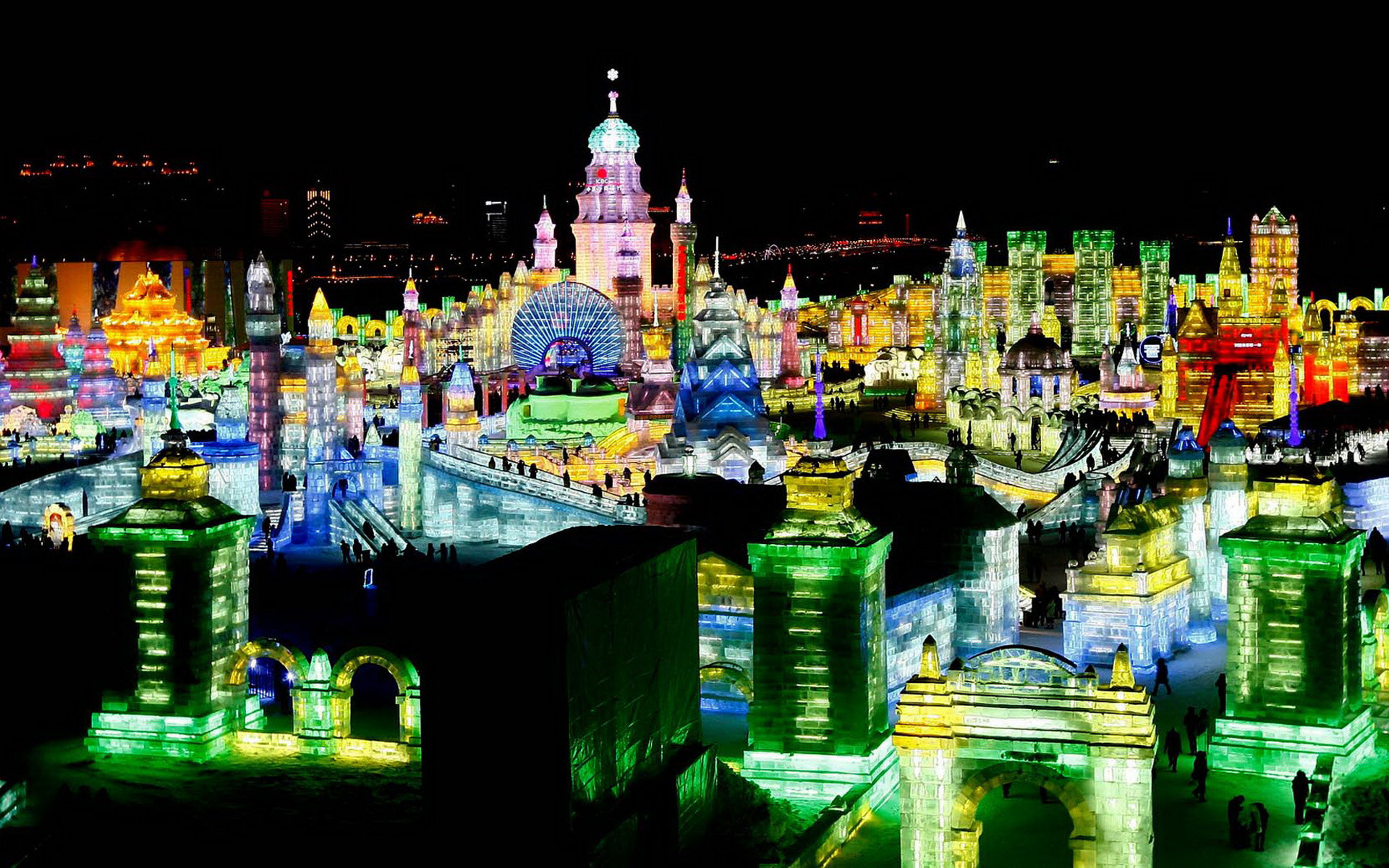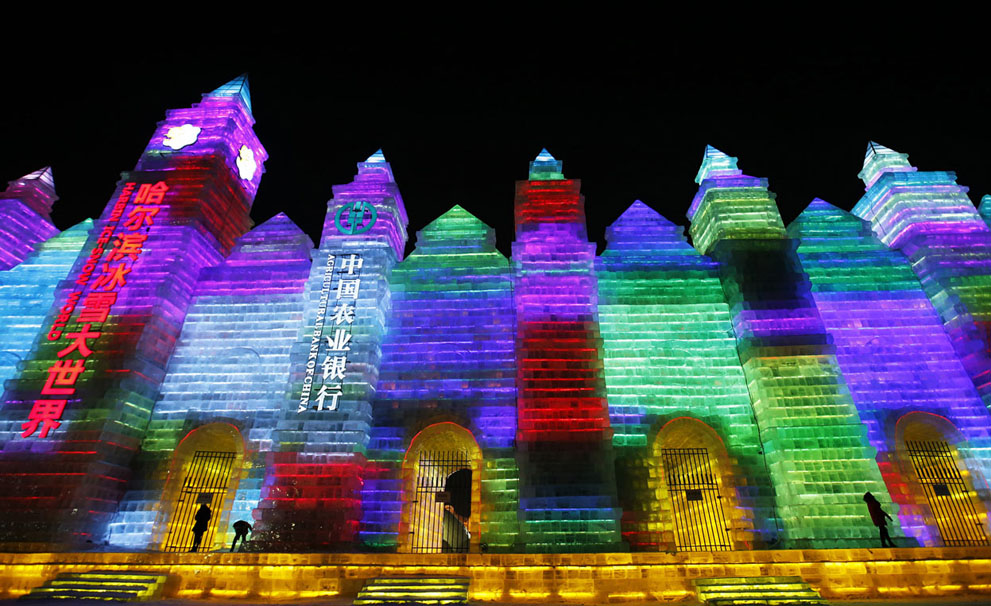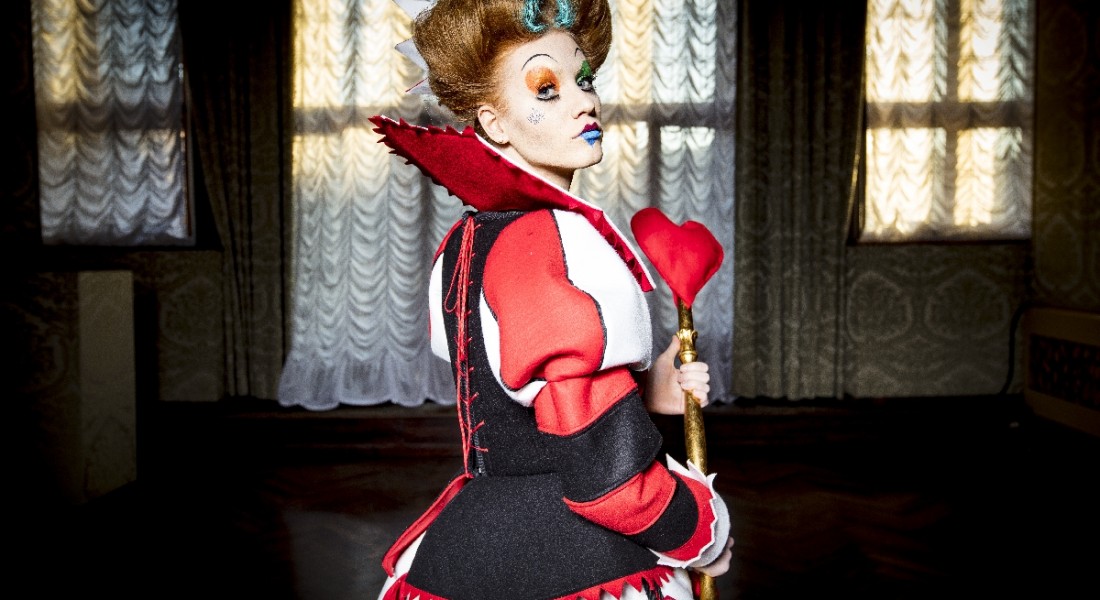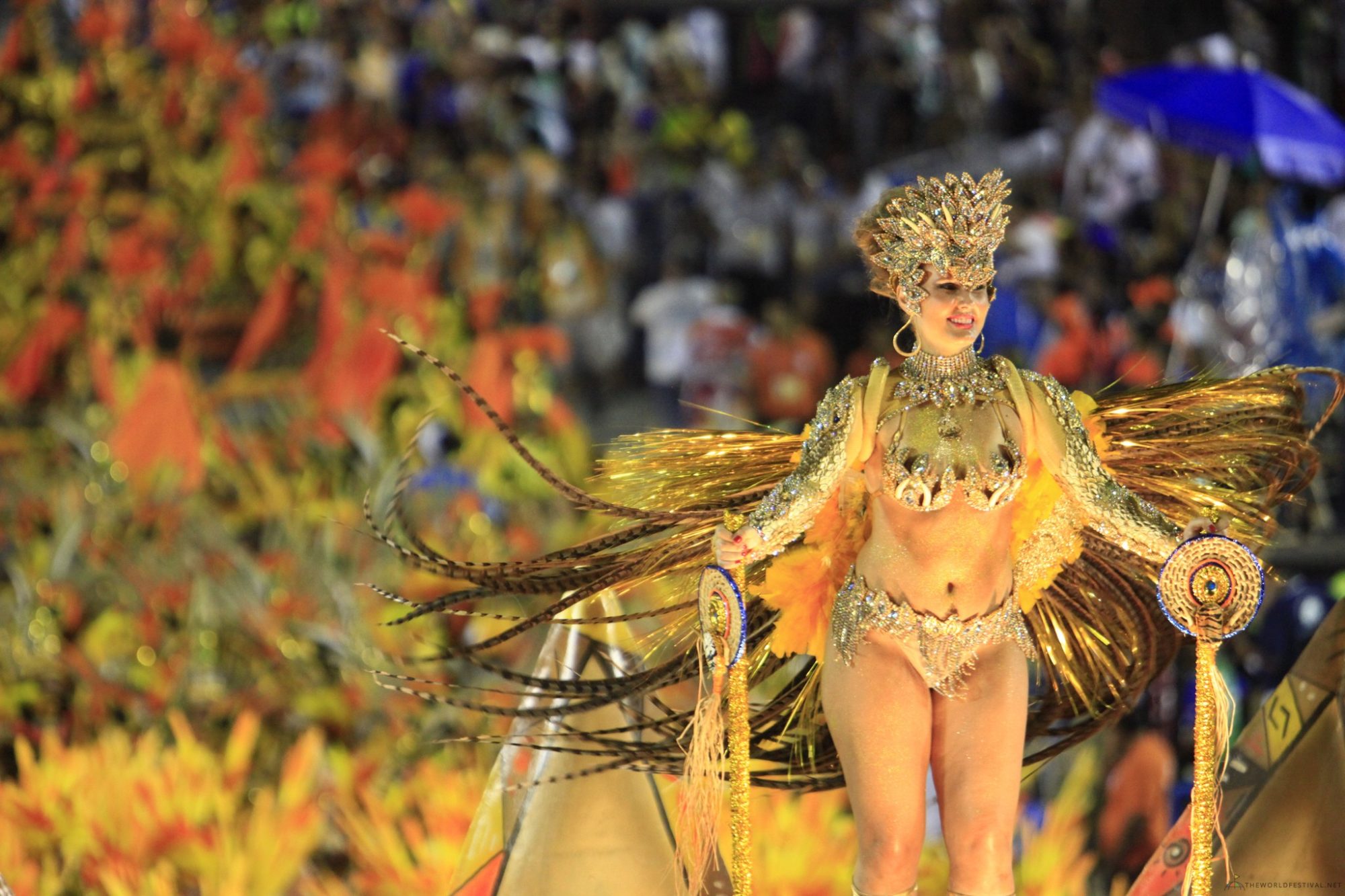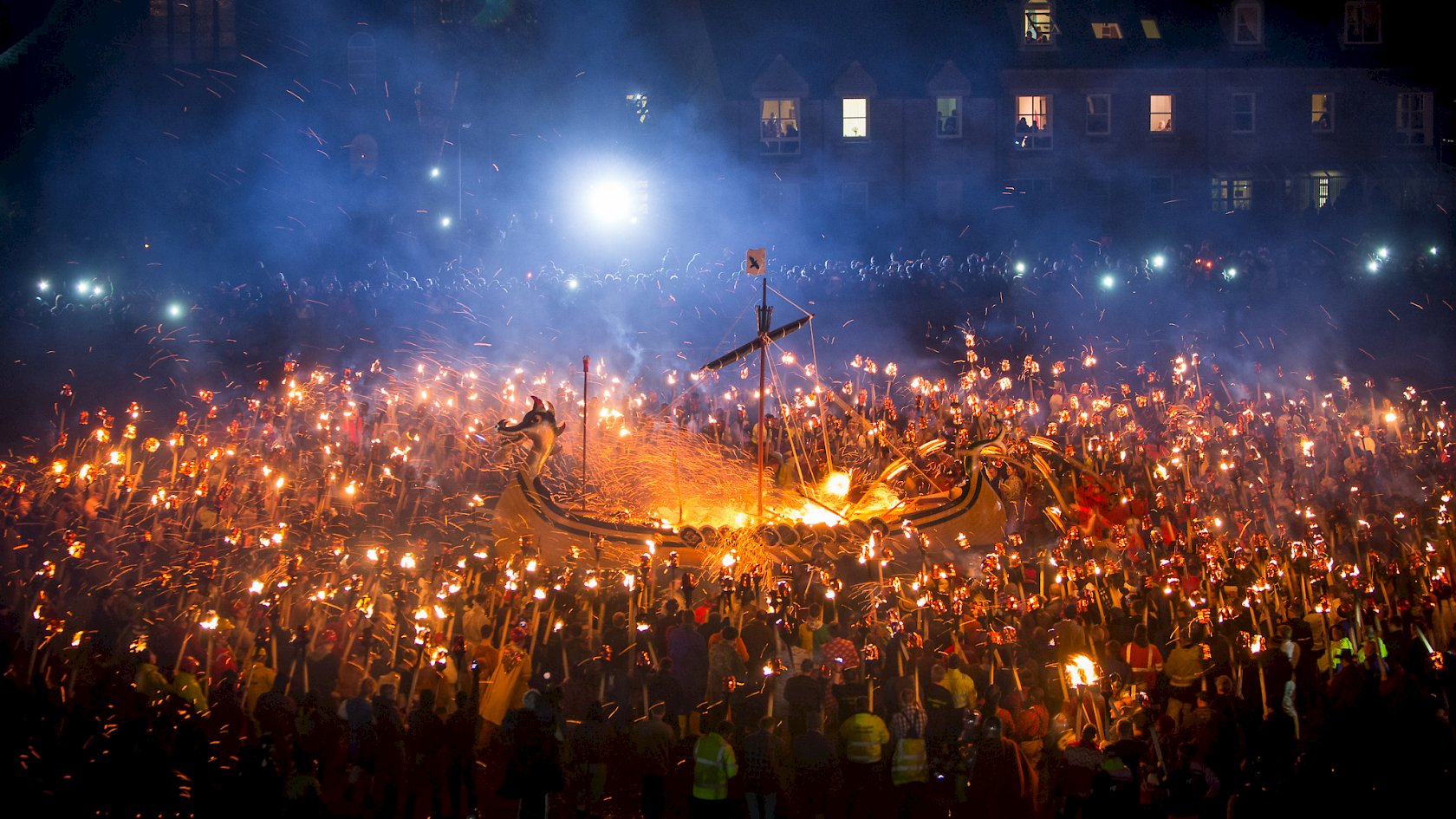We’ve written about some of these events, festivals and carnivals in prior years and others not, but if they’re on the list again, it should tell you something. Classic. Epic. A must do experience. These are all the reasons why. Take a look at some of our favorite picks.
The Harbin International Ice and Snow Festival: China
In northern China where it is beyond just a tad bit chilly, the Harbin International Ice and Snow Sculpture Festival is an annual winter festival that takes place in Harbin, Heilongjiang, China, and now is the largest ice and snow festival in the world. The festival includes the world’s biggest ice sculptures. The results? Astonishing, breathtaking and mind blowing are three words that come to mind. Have a look!
Photo credit: Complex Mania.
The Festival has been around since 1985 and lasts for over one month. If you go, be sure to bring a very WARM coat — it is located in an arctic climate which is one of the reasons it can boast so much ice and snow for such amazing creations. The Ice Lantern Festival is the forerunner of the Ice and Snow Festival and has a cultural background, connected to early (very early) Chinese history.
The first Ice lanterns were a winter-time tradition in northeast China. During the Qing Dynasty(1644 – 1911), the local peasants and fishermen often made and used ice lanterns as jack-lights during the winter months. Tradition extended for years later where people made ice lanterns and put them outside their houses or gave them to children to play with during some of the traditional festivals. Additional activities during the festival include Yabuli alpine skiing, winter-swimming in the Songhua River, and the ice-lantern exhibition in Zhaolin Garden. Remember how we said it was COLD? To give you an idea of winter temperatures, the average in winter is 16.8 °C or a breezy 1.8 °F, and annual lows of -35 °C or minus 31 °F, are apparently not uncommon. Ouch!! But for this beauty, it may very well be worth it — just bring that down parka with you.
Photo credit: Harbin Ice Festival Pinterest Page.
Carnival of Venice: Venice Italy
Carnival of Venice is an annual festival held in Venice, Italy and most known for its fabulous masks, costumes and myriad of events. The Carnival ends with the Christian celebration of Lent, forty days before Easter, on Shrove Tuesday, the day before Ash Wednesday. It is probably the most known festival in Italy and one of the oldest, having started its tradition as far back as the 15th century – yes, really. Technically, it has been traced back to the beginning of the 14th century.
Early on, it wasn’t just about the carnival because back then, there were other things that grabbed people’s attention including gambling dens, brothels, theaters, cafés, wine shops and the festivities of the event itself, which included exotic animals, ropewalkers and jugglers. One of the biggest draws to the event, in addition to the visual spectacles of course, is the DINNER, which is a decadent evening with performances at the tables and shows you can view over dinner that extend throughout the night.
Above two photo credits: Carnival in Rio website
n,the photo opportunities are vast, from the performers filling the piazzas and main waterways of the city to private parties and masquerade balls within Venice’s grand noble palaces. People describe it as an experience where time stands still and you are taken back to ancient times, but ancient decadent times to be sure. You’ll also witness what they refer to as the Flight of the Angel (or Flight of Colombina), a tradition that began with a Turkish acrobat in mid-1500’s. Here, you’ll see an artist hanging from a metal cable, and, suspended in air, makes his descent from the top of St. Mark’s Bell Tower to the Doge’s Palace. For more information on this internationally acclaimed event, visit http://www.carnevale.venezia.it.
Carnival in Rio: Brazil
Rio is turned upside down during this spring event, held every year. Even though Carnival (Carnaval in Portuguese) is celebrated in towns and villages throughout Brazil and other Catholic countries, Rio de Janeiro has long been regarded as the Carnival capital of the world, which is not only the biggest Carnival, but one of the most well known around the globe, attracting more than a half a million visitors every year.
Photo credit: WorlddFestival.net.
The event is known for being wild and over the course of five days, 40 days before Easter, Carnival is all about decadence and excess. Celebrated as a profane event, it is said that it “could be interpreted an act of farewell to the pleasures of the flesh.” During this window, there are carnival celebrations on virtually every corner of Brazil, the best-known ones taking place in Recife together with the neighboring Olinda (in the Northeast of Brazil) and Salvador. As for the rest of the world? They tend to head to the largest gathering which is in the heart of Rio de Janeiro. Nearly all the music played during Rio Carnival is samba — dance lovers, get ready!. It is a uniquely Brazilian music originating from Rio, a dance form that was invented by Afro-Brazilians.
More information on this incredible event can be found at: http://www.rio-carnival.net/.
New Orleans Mardi Gras
For those who may not realize this, the holiday of Mardi Gras is celebrated in Southern Louisiana — in other words, it comes with history and tradition. There is typically a parade during every day of the celebration. Since we’ve been giving you a little bit of history of these events, Mardi Gras also has its own. The origins of Mardi Gras can be traced to medieval Europe, passing through Rome and Venice in the 17th and 18th centuries to the French House of the Bourbons. From here, the traditional revelry of “Boeuf Gras,” or fatted calf, followed France to her colonies. The very first Mardi Gras event took place in 1703, the tiny settlement of Fort Louis de la Mobile. Today, it attracts people from around the world and the city shuts down while people dance, drink and celebrate in the streets of New Orleans.
Photo credit: from https://www.pinterest.com/pin/421086633887345390/
By the 1730s, Mardi Gras was celebrated in New Orleans, and around ten or so years later, it became more prestigious when elegant society balls were integrated, an extension of the event that still occurs today. Don’t confuse Carnival and Mardi Gras — Carnival refers to the period of feasting and fun that begins on January 6: the Feast of the Epiphany. Mardi Gras refers to Fat Tuesday, the final day of revelry before Ash Wednesday, when Lent begins.
As a kid, I remember people talking about Mardi Gras throws so the intrigue grew over the years. This too have become known around the world — members on floats throw items to parade-goers as the floats pass by and items they throw include doubloons, beads, cups, homemade trinkets, toys and more! The throwing of trinkets to the crowds was started in the early 1870s by the Twelfth Night Revelers and today, they tend to throw medallions rather than trinkets, which are aluminum and anodized in many different colors. You can buy these all over New Orleans btw, and I tend to pick up more every time I go. They represent the parade theme on one side and the Krewe’s emblem on the other and some people collect them. I have them on hand for Burning Man, Halloween and other costume parties I get invited to throughout the year.
Other popular throws include cups (otherwise known as New Orleans dinnerware), long pearl beads and stuffed animals and I have a ton of those long pearl beads in a variety of colors as well. Mardi Gras, albeit crowded and crazy, is a photographer’s haven. More information on this annual tradition can be found at http://www.mardigrasneworleans.com.
The Shetland’s Viking Fire Festival
I have to include some Viking culture in here given that I have some Scottish background after all. At the end of January, the Shetland’s Viking Fire Festival brings together a l’il Dungeons and Dragons with fire lovers, all of which is let loose on a remote Nordic Island. Cool, right? This traditional is also historical and has been around since the 1880’s, starting with a massive bonfire and booze festival and has grown in popularity and acclaim ever since. Like many “viking things,” there’s an air of secrecy around it (don’t ask), but that’s part of the charm and mystery of this delightful event held in northern England every year.
Thank God there’s fire as part of this annual event since it’s a bit on the chilly side, but nowhere as cold as the Harbin Festival as noted above. Imagine nearly a thousand heavily disguised men marching through the a small town (Lerwick), with rockets exploding overhead, and a ritualistic burning of a longship. I used to live in England, so despite the dampness in the heart of winter, I know this country’s magic, which includes quirky cultural traditions, not unlike this one.
Photo credit: Shetland Tourism Board/Viking Fire Festival Page.
Shetland lies 600 miles north of London so you kinda need to plan ahead. More than a hundred islands, just 15 of them inhabited, span the hundred milesbetween Fair Isle and Out Stack, the northernmost point of Britain. This little town is pretty quiet for the rest of the year, however on the evening of Up Helly Aa Day, vikings form ranks in the darkened streets. They shoulder stout fencing posts, topped with paraffin-soaked sacking. Yes really.
On the stroke of 7.30pm, a signal rocket bursts over the Town Hall. The torches are lit, the band strikes up and the amazing, blazing procession begins, snaking half a mile astern of the Guizer Jarl, standing proudly at the helm of his doomed replica longship as noted above, or ‘galley’. Try to visualize it if you can beyond the photo above — apparently, it takes half an hour for the Jarl’s squad of burly Vikings to drag him to the burning site, through a crowd of four or five thousand spectators.
More information can be found at http://www.shetland.org which provides information on the area as well as the festival so you can plan ahead.

Renee Blodgett is the founder of We Blog the World. The site combines the magic of an online culture and travel magazine with a global blog network and has contributors from every continent in the world. Having lived in 10 countries and explored over 90, she is an avid traveler, and a lover, observer and participant in cultural diversity. She is also the founder of the Magdalene Collection, a jewelry line dedicated to women’s unsung voices and stories, and the award-winning author of the bestselling book Magdalene’s Journey
She is founder of Blue Soul Media and co-founder of Blue Soul Earth as well as the producer and host of the award-winning Blue Soul CHATS podcast, that bridges science, technology and spirituality. Renee also founded Magic Sauce Media, a new media services consultancy focused on viral marketing, social media, branding, events and PR. For over 20 years, she has helped companies from 12 countries get traction in the market. Known for her global and organic approach to product and corporate launches, Renee practices what she pitches and as an active user of social media, she helps clients navigate digital waters from around the world. Renee has been blogging for over 16 years and regularly writes on her personal blog Down the Avenue, Huffington Post, BlogHer, We Blog the World and other sites. She was ranked #12 Social Media Influencer by Forbes Magazine and is listed as a new media influencer and game changer on various sites and books on the new media revolution. In 2013, she was listed as the 6th most influential woman in social media by Forbes Magazine on a Top 20 List.
Her passion for art, storytelling and photography led to the launch of Magic Sauce Photography, which is a visual extension of her writing, the result of which has led to producing six photo books: Galapagos Islands, London, South Africa, Rome, Urbanization and Ecuador.
Renee is also the co-founder of Traveling Geeks, an initiative that brings entrepreneurs, thought leaders, bloggers, creators, curators and influencers to other countries to share and learn from peers, governments, corporations, and the general public in order to educate, share, evaluate, and promote innovative technologies.

